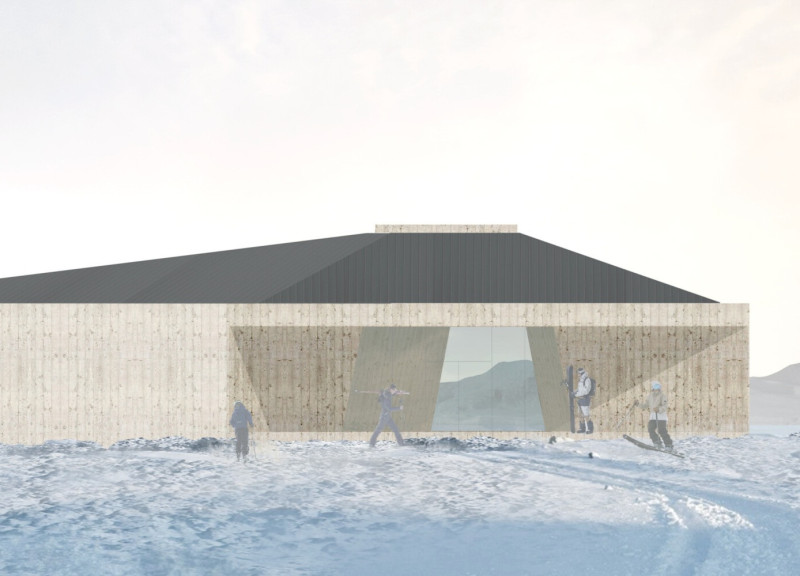5 key facts about this project
At its core, the project embodies a contemporary aesthetic that balances modern design with contextual sensitivity. The architectural design integrates natural elements, making it harmonious with the landscape while promoting sustainability. The overarching concept revolves around creating open, inviting spaces that encourage movement and adaptability. This functionality is evidenced in the layout, which allows for flexibility in use, accommodating various events and activities that align with the community’s requirements.
Materiality plays a crucial role in the project’s overall impact. A careful selection of materials aligns with the project's sustainable ethos. The facade features locally sourced bricks, which not only reduce the carbon footprint but also reflect the historical context of the area. Large expanses of glass complement the structure, allowing for ample natural light and a connection to the exterior environment. This choice creates an inviting atmosphere while enhancing the user experience by blurring the lines between indoor and outdoor spaces.
The roof design is particularly noteworthy, characterized by its unique geometry which not only serves aesthetic purposes but also addresses practical considerations such as water drainage and solar exposure. The integration of green roofs enhances insulation and contributes to the building's ecological footprint, reinforcing the project's commitment to sustainable architecture. In addition, rainwater harvesting systems have been incorporated, showcasing innovative water management solutions that align with contemporary environmental standards.
The spatial organization of the interior reflects a conscious effort to promote social interaction. Open-plan layouts dominate the main areas, with versatile spaces that can be adapted for various uses. The design prioritizes accessibility, ensuring all areas are reachable for individuals of differing mobility. Incorporating flexible partitions allows for the creation of smaller, intimate settings when needed, further enhancing the functional versatility of the space.
Unique design approaches are evident throughout the project, particularly in its engagement with the local community. The design team conducted extensive research to understand the cultural nuances of the area, which informed the project’s architectural language. This thoughtful integration of local identity into the design is seen in various elements, such as artwork that reflects local traditions and community histories embedded within the design features.
Outdoor spaces have also been thoughtfully considered, including landscaped gardens that not only beautify the surroundings but serve as recreational areas for the community. Pathways that meander through these green spaces invite exploration, creating a seamless flow between the architecture and the landscape.
In essence, the project is a testament to the synergy between architecture and community needs. It successfully merges modern design principles with a respectful approach to the local environment and cultural context. By offering a multifunctional space that is adaptable, sustainable, and engaging, it exemplifies how architecture can foster community ties while remaining sensitive to its place within the urban fabric. To delve deeper into the architectural plans, sections, and designs that detail this unique project, viewers are encouraged to explore the project presentation for a comprehensive understanding of its innovative features and design philosophy.


























